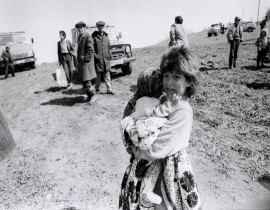Politicon.co
The role of strategy and strategic context in explaining the divergent routes followed by Tunisia and Egypt in post-revolutionary period
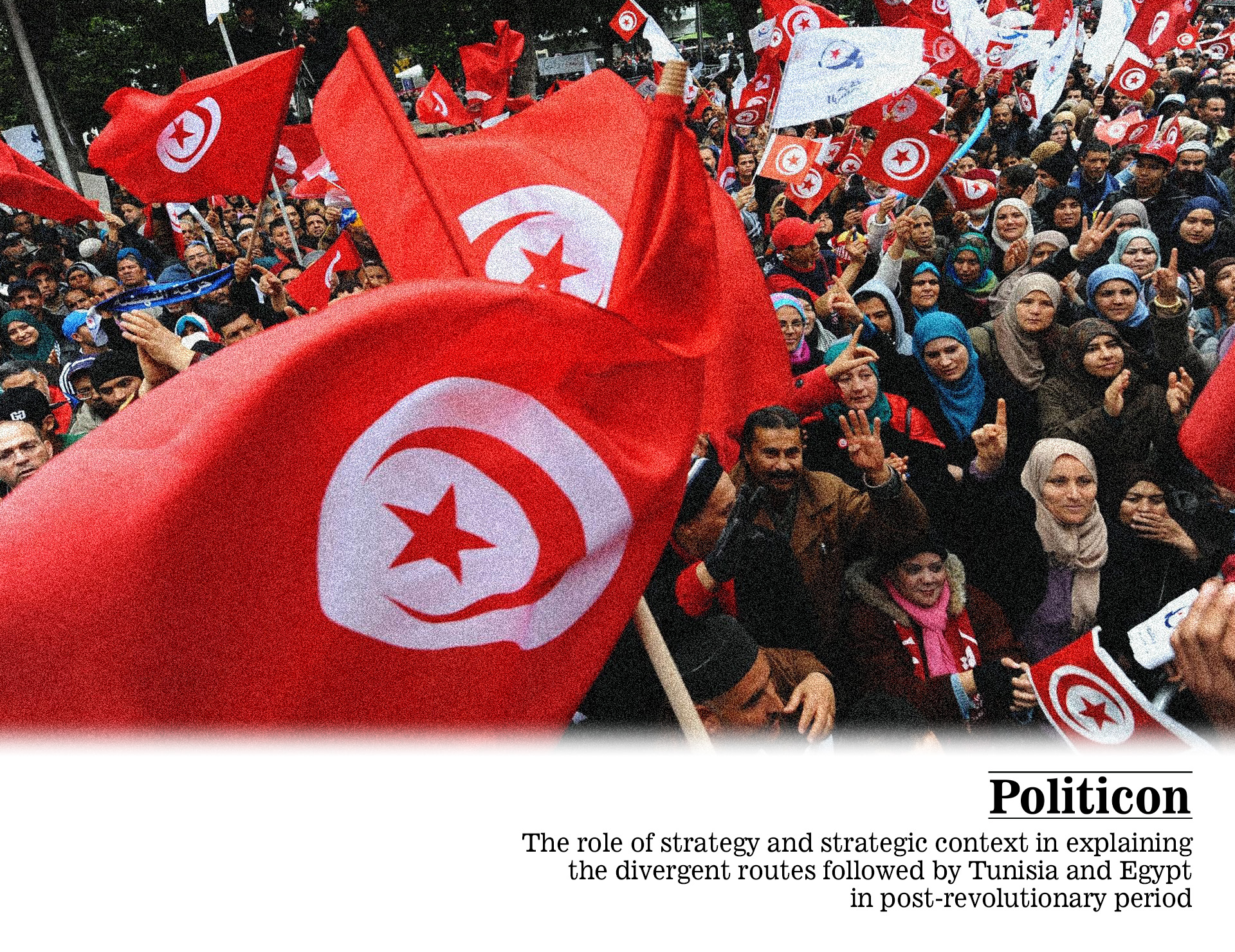
In an attempt to explain the revolutionary and post-revolutionary processes in the Middle East, political analysts tend to lean either on structural or on agential points of view. Both structuralist and agentialist theories enable us to distinguish some revolutionary patterns common for Egypt and Tunisia, and overall in the Arabic world. However, while understanding the different paths these countries have followed throughout the processes of post-revolutionary constitution-making, one might clearly identify the limits of those theories. Alfred Stepan in this logic thus highlights three major differences between Egypt and Tunisia which contributed to the divergence of their post-revolutionary paths: the difference between the extent of social and political claims of Islamic parties, the difference between the level of participation of the military in the process of democratic transition, and finally the difference between the level of consensus reached by political actors in these countries. Assuming that those two countries had possessed similar socio-political structures, the structural analysis alone is insufficient if there is no acknowledgment of the role of agential factors influencing the underlying processes. And, at this point, Jessop’s “strategic relational” approach seems to be the most relevant in understanding the process. Hence, the aim of this essay is mainly to discuss the role of concepts of strategy, strategic actor and strategic context in understanding key differences given by Stepan between Egyptian and Tunisian revolutions. In order to do so, we will focus on two key observations: firstly, while in Tunisia, the military elite from the early periods of the revolution announced it would submit to civilian control and stay out of politics, in strongly contrast with the situation in neighboring Egypt, where dictator Hosni Mubarak fell shortly after Ben Ali but was replaced not by an open civilian body, but rather by the Supreme Council of the Armed Forces (SCAF), with its penchant for attempting to manage fundamental political change by means of unilateral communique. Secondly, while Islamist Muslim Brotherhood and secular parties in Egypt stood apart from each other since the beginning of the post-revolutionary period until the ousting of Mohammed Morsi and exclusion of Islamists from the politics, their counterparts in Tunisia, Ennahda and the secular opposition parties gradually established consensus between themselves by coming up with an idea of “twin tolerations”. By explaining these differences, this essay endeavors to: firstly, illustrate the role of intentions in causing strategic action, and how these intentions can be based on different kinds of motivation; secondly, demonstrate how both context and the perception of it prove to be crucial variables in bringing about strategic choices; thirdly, to clarify that neither context nor intentions, but rather the strategies actors devise as means to realise their intentions upon a context play a decisive role in producing political outcomes.
In order to answer the question of why military institutions in Tunisia and Egypt reacted differently to the political processes during the constitution-making period, most analysts emphasize the fact that the historical legacies of Egyptian and Tunisian military institutions were different. The limited size of the military, a negligible role it played in the struggle for national independence in Tunisia, as well as its distance from the Arab-Israeli conflict ground and other regional wars contributed to the swelling of its prestige and its self-importance. Egypt, contrarily, possessed a very large military with a long history of political engagement since its independence. The Tunisian army lacked popular legitimacy that Egyptian officers could derive from defending the nation. Subsequently, these institutions had developed distinct internal cultures regarding the principle of civilian supremacy. This very different historical legacy proved crucial in shaping the countries’ divergent trajectories. What we can witness here is historical legacy having played key role as the context in which actors found themselves, which was bequeathed to them from the past and constrained the range of political possibilities for them. Hence, path dependence can be observed in formation of the context which matters for contemporary practice, hence for political outcomes. However we should not forget that it was not the context itself, but its interpretation as a constraint or an opportunity that shaped the practice taken by the actors.
Another argument considering the given question concerns the economic interests of the Egyptian military institutions, as throughout the decades they had been expanding their economic reach into traditionally civilian-controlled areas, thus it was vital for them to intervene in politics, in order to protect and increase their economic holdings. Contrarily, the Tunisian military never developed vested economic or institutional interests that would drive it into politics. The Tunisian military institution, as opposed to Egyptians, had no desire to protect its own lucrative economic interests from public scrutiny, which determined the difference between the intentions towards the revolutionary process.
Consequently, the context in which Egyptian and Tunisian military institutions found themselves and the intentions and preferences they held towards the revolutions in these countries played key roles in determining their strategy, whether to intervene or not the politics of their countries. These intentions can be either utility-maximizing or just based on cultural factors. What this implies is that instrumental motives are quite important to be taken into account while analyzing political actions, but we cannot limit ourselves with merely goal-oriented assumptions, as a wider scope for motivations should be considered while analyzing political cases in order to avoid being “trapped by the narrow instrumentalist views. This explains why the Tunisian military did not emulate its Egyptian counterpart (who forced Muslim Brothers out of the government) and oust the Ennahda-led government. The Tunisian military even had a comparable opportunity to intervene in 2013, characterized by paralyzed political institutions, multiple assassinations and a massive number of people in the streets calling for Ennahda’s ouster. Yet, they had little motivation to strike. While the Egyptian military could not afford to let the transition get out of hand and thus took an active role in managing it, the Tunisian military had little stake in how the transition unfolded, retreating to the barracks after Ben Ali’s fall. Moreover, one cannot dismiss the direct effects of the different strategic choices selected by Egyptian and Tunisian military institutions: in Egypt, institutional innovation temporarily perpetuated and strengthened the role of major representatives of the old regime while in Tunisia institutional innovation quickly contributed to the renewal of the political personnel and weakened the remnants of the old regime. Thus what we can witness is that the above-mentioned strategic choices proved decisive in the alteration of the overall context itself.
In an attempt to answer the second question, why consensus between secularists and Islamists was achieved in Tunisia, but not in Egypt, some could again remind the significance of historical legacy, pointing to the difference between political experiences of Ennahda and Muslim Brothers. However, the most crucial factor to be considered seems to be the contexts in which these political parties found themselves. Two key points have to be taken into account here: Firstly, while by the results of the 2011 elections, Ennahda fell short of a majority in the Constituent Assembly, and had to form a coalition with two secular parties, this constraint was not characteristic for Egyptian Muslim Brothers, who, together with Salafis, collected enough votes to be able to avoid involving secularists in the process of constitution-making. Secondly, with the military and judiciary willing and able to undermine the Islamists, the opposition in Egypt had little incentive to negotiate with the Brotherhood. There was no reason to compromise with Morsi when the opposition could instead kick him out with the help of state institutions. In Tunisia, by contrast, the opposition realized, after months of protest, that there would be no judiciary or military to come to its aid. Ultimately, it realized that it had to back down on its demand for the dissolution of the constituent assembly and instead negotiate with Ennahda on the way forward. The Tunisian “success story,” then, is not that all sides wanted democracy, but rather that all sides had no choice under the given constraints, but to settle for democracy. On the contrary, the Egyptian case demonstrates how the Islamists’ strategic action was the result of the miscalculation of opportunities and constraints they found themselves in. What we can clearly induce from here, is that opposite parties’ perception of power in Egypt and Tunisia was a crucial variable in producing consensus in one of the countries rather than the other. Apparently, this analysis undermines rationalists’ views, as ‘not the reality, but the perception of it’ explains the minimalist strategy of Tunisian parties, as well as the maximalist one of their counterparts.
One could also mention the importance of timing while explaining the different directions taken in two countries. The fact that Ennahda compromised upon the critical choice of ratifying a liberal constitution only after the July 2013 coup that deposed Egypt’s then-President Mohammed Morsi (which in turn can be perceived as the unintended consequence of Brothers’ strategic action), implies that Ennahda could learn from the Egyptian experience. The Egyptian experience could have served as a cautionary lesson for the Ennahda leadership in Tunisia and it persuaded the party’s elite to make difficult compromises that they had resisted in the prior year. This proves the strategic selectivity of the given context, meaning that the context itself determines certain strategies to be more effective over others. In this way, the interaction of strategy and context serves to shape both the development of that context and the very conduct and identity of strategic actors after the event. As an Ennahda official, Ahmad Jebali once said: “Ennahda is a civic party emanating from the reality of Tunisia, not a religious party”. Exactly “the reality of Tunisia” Jebali perceives they are in, is the strategical context that shaped their identity throughout the years of strategic action and learning.
Although it is not considered here how collective entities such as military and religious institutions came to think and act as if they had a personality of their own, it draws attention to a range of issues that has to be considered while discussing the problem of structure and agency. Firstly, it is implied that actors are strategic, and their motivations together with the environment in which they find themselves, both play a crucial role in their strategical orientation. The empirical cases given above proved how structures are selective of strategy, in the sense that, given a specific context, only certain courses of strategic action are available to actors and only some of these are likely to see actors realise their intentions. Moreover, it is indeed the strategies political actors devise as a means to realize their intentions upon a context that produces political outcomes. This implies both direct and indirect effects, as both strategic context and the intentions strategical actors hold are affected as the result of their actions, while this may include also the unintended consequences due to the lack of information and misperception of the objective reality. Finally, as it is emphasized throughout the essay, in the condition of incomplete information, actors have to interpret the context in which they operate in order to be able to make strategic choices, therefore their ideas provide a point of mediation between actors and their environment. Consequently, as Hay concludes, ‘the dialectical understanding of the relationship between the ideational and the material is logically entailed by a dialectical understanding of the relationship between structure and agency.
Reference list:
- Bellin Eva (2014). Explaining democratic divergence: ‘Why Tunisia has succeeded and Egypt has failed’. The Project on Middle East Political Science.
- Grewal Sharan (2013). ‘Why Tunisia didn’t follow Egypt’s path?’ The Washington Post.
- Hay, Colin (2002) ‘Political Analysis: A Critical Introduction’, Palgrave Macmillan.
- Salem Sara (2013). ‘The Egyptian Military and 2011 Revolution’. Arab Studies Institute.
- Stepan, Alfred and Juan J. Linz. (2013). ‘Democratization Theory and the Arab Spring’. Journal of Democracy 24 (2): 15-30.
![]()
- TAGS :
- revolution
- Tunisia
- Egypt
- TOPICS :
- Domestic affairs
- REGIONS :
- Africa


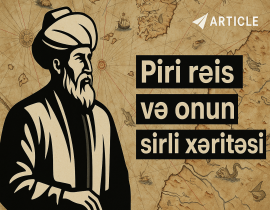

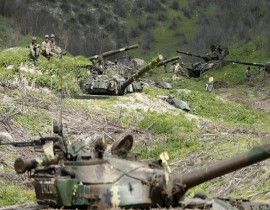

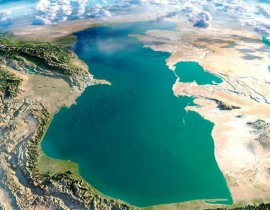
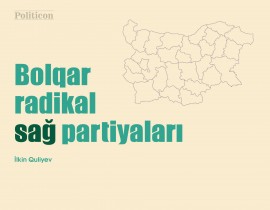
jpg-1599133320.jpg)
